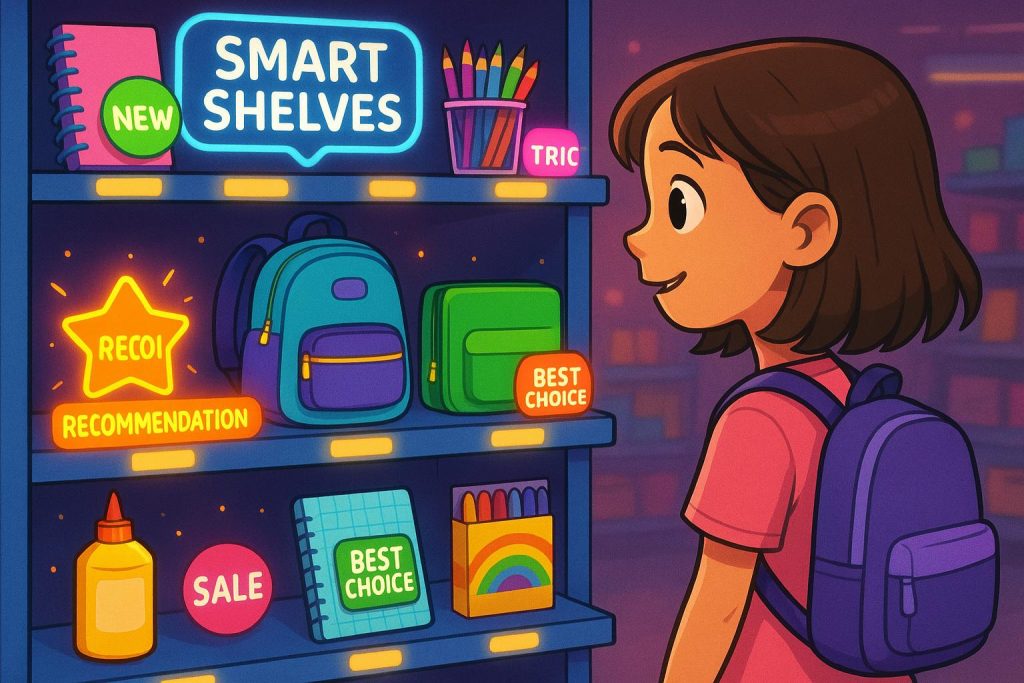Listen to the article
In 2025, retailers harness artificial intelligence to personalise shopping, streamline in-store experiences, and enhance demand forecasting amidst economic challenges, marking a transformative year for back-to-school retail.
Back-to-school shopping, historically a bustling and high-pressure retail season, took a significant leap forward in 2025 as retailers embraced artificial intelligence (AI) to tackle evolving consumer demands and economic challenges. With consumer spending having dipped slightly in recent months and inflation remaining persistently high, retailers faced heightened pressure to modernize their strategies. AI emerged as a critical tool, enhancing the shopping experience while addressing inventory and operational efficiencies.
One of the most transformative impacts of AI has been on personalisation, which now begins even before a customer’s first click. AI-powered recommendation engines help customise shopping lists, responding to nuanced needs such as varying grade levels within a family. These systems suggest appropriate products, surfacing inventory that is locally available and dynamically adjusting recommendations in real time based on user behaviour. Conversational AI further supports the shopping journey, keeping customers engaged within a brand’s ecosystem and reducing the risk of drop-offs. For instance, AI can identify that a kindergartner needs name labels while a high schooler requires tech gear, and anticipate complementary purchases like graph paper or mechanical pencils, refining the customer experience with precision.
Beyond the virtual realm, AI has also revolutionised the in-store experience. High foot traffic in August, traditionally a challenge with long queues and stock issues, was mitigated by technological enhancements such as smart carts that auto-track purchases and palm-based payment options that reduce checkout friction. Major players like Walmart expanded their omnichannel offerings, incorporating AI chatbots and geo-fencing to streamline curbside pickups. AI-managed inventory systems ensured shelves remained stocked with relevant items, bridging the gap between online convenience and physical store immediacy.
The sophistication of AI extends deeply into demand forecasting, an area historically reliant on broad market assumptions. Retailers now leverage AI to integrate hyperlocal data—ranging from school start dates and sports schedules to weather forecasts and viral social media trends—allowing for finely tuned inventory management. Walgreens exemplifies this approach, using AI to track everything from TikTok-driven pen demand to port congestion impacting shipments, adjusting pricing dynamically to reflect supply constraints and consumer price sensitivity. Research from McKinsey supports these advances, showing retailers using AI-driven forecasting reduce errors by up to 50% and improve accuracy by up to 30%, leading to fewer stockouts, lower markdowns, and enhanced customer satisfaction.
Safety and loss prevention also saw AI innovation during peak shopping periods. Vision AI models now monitor checkout accuracy and in-store hazards in real time, enabling early staff intervention to prevent theft and accidents. Solutions like Everseen’s Evercheck exemplify how AI can operate unobtrusively to secure the shopping environment without disrupting the customer experience.
The backbone of these AI advancements is a solid data foundation. Success hinges on integrating comprehensive, trustworthy data from all touchpoints—whether cloud-based or on-premises—into a unified system that enables accurate AI predictions and informed decision-making. Retailers who modernise their data infrastructure not only gain immediate seasonal advantages but position themselves for long-term agility and operational excellence.
Complementing these retail sector changes, industry-wide trends reinforce AI’s growing role. Google’s launch of tools such as virtual try-ons, AI-driven price alerts, and outfit inspirations showcases how technology personalises shopping further, enhancing interactivity and helping consumers find the best deals. Surveys by PwC and Deloitte highlight that a significant portion of consumers plan to use AI tools during their back-to-school shopping, with many employing generative AI for research and product recommendations. This evolving consumer behaviour presses retailers to optimise deal visibility and integrate AI discovery tools to meet expectations.
Experts advocate for e-commerce merchants to move beyond basic AI personalisation by harnessing behavioural data to streamline search times and create more meaningful market segmentation. Industry leaders also emphasise maintaining a personal touch through AI, aiming to make shopping more engaging and commercially effective. These themes were echoed recently at industry events where leaders from brands like Ulta Beauty shared insights on how AI-driven consumer engagement has shaped marketing strategies since as early as 2018.
In summary, AI’s incorporation into back-to-school retail strategies in 2025 represents a watershed moment. By enhancing personalisation, streamlining in-store operations, improving demand forecasting, and bolstering safety, AI is elevating the shopping experience amid a challenging economic backdrop. Retailers that embrace integrated data platforms and deploy advanced AI tools are not only meeting this season’s demands but also setting the stage for a smarter, more responsive retail future.
📌 Reference Map:
Source: Fuse Wire Services


